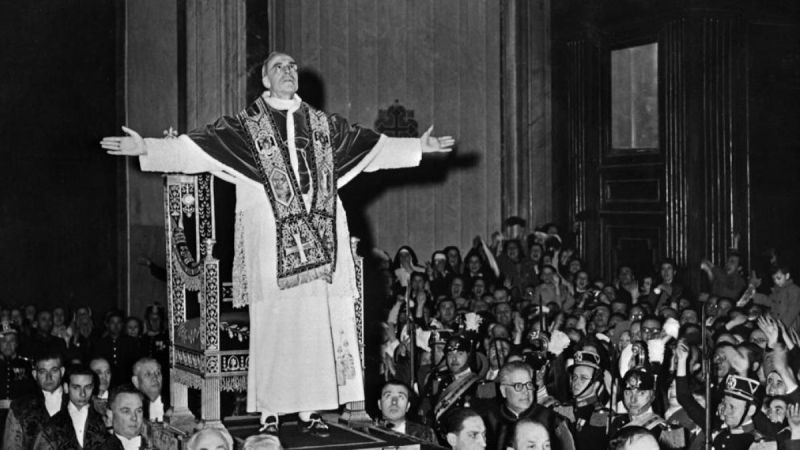How did the fascist international begin in Latin America?


Jewish link

Published at: 11/10/2024 05:59 PM
Fascism in Latin America emerged from the implementation of European studies carried out by the Imperial Ministry for
Popular Enlightenment and Propaganda directed by Goebbles
and whose objective was to spread Nazi thought, not only in Germany, but also outside its borders, where the Foreign Division of the Party German National Socialist served to promote that ideology in the world.
While in North America, Nazi
sympathizers were reduced to groups of economic influence, such as Henry Ford, who wrote a book called The International Jew,
in which he showed his anti-Semitism and was decorated by the Nazis in 1938. At
the same time, in Latin America, Nazi parties were born in Argentina (August 7, 1931), Paraguay (August 20, 1931) and Brazil (October 5, 1931), all of
them with direct contact with the National Socialist Party
German.
The researcher Diego González
Porras developed a work called “Fascists
of Latin America in the 1930s ”,
published in the Emergency
Notebooks by the Center for Decolonization, in which he explained that “although an example
of fascism is being sought in Latin America, Pinochet's Chile appears, that
dictator who, together with the United States, orchestrated the
coup against President Salvador Allende and
destroyed the entire revolutionary project that had been built in Chile, before that it was always
governed by technocrats, who managed the country as if it were a private company”.
However, little is said about the birth of fascism in Latin America before those fateful years of Plan Condor, in which the left was persecuted in every corner of the continent by authoritarian governments. To better explain this point, we bring some examples that we will develop later on.
The researcher, González Porras, also commented that “in Brazil, in the city of São
Paulo, on October 7, 1932, Brazilian Integralist Action (AIB) was officially
created, a political group whose purpose was to become a great
national movement. Led by Plínio
Salgado, called 'Chief' by his followers, he had a solid discourse with a clear Christian base, which tried to channel the anxieties and fears
of the social and media
sectors into political action, to the extent that it had been conceived as an instrument for their incorporation into the political process.
Since its founding,
it experienced rapid growth that lasted until its dissolution by
the Brazilian New State in November 1937.”
Meanwhile, in Bolivia, the Bolivian Socialist Falange (FSB) emerged, which is a fascist
and reactionary group whose motto was “God, Fatherland and Home”, and was erected as a copy of the Spanish Falange of Franco.
This organization aspired to the reorganization of the army to protect the
lands of the landowners. They believe in the cult of violence and
force, even though they cover up their intimate nature with phrases about freedom,
democracy, national recovery with the good people of the country.
The FSB is a movement that openly identifies with Italian fascism and Spanish Falangism, and which also has its main strength among upper-middle class young people and that, after the Revolution of 1952, former landowners and members of the Bolivian elites joined together. It had an important presence in La Paz and now, they dominate mainly in Santa Cruz.
Los Cristeros Mexicanos
In the same way, in Mexico, the National League for the Defender of Religious Freedom was created , which was founded in 1925 before the Cristero War, it was the one that confronted the Mexican government during that period and remained active until 1933.
To contextualize a little, using Catholicism to insert fascism in the Peoples, we have seen as an example of this what is known in Mexican history, such as the Christian War (of Christ), also called the Cristera Rebellion, the War of the Christians or Cristiada, to an armed conflict that took place between 1926 and 1929.
The portal called Concepto published an investigation in which it detailed that “the Cristeros
confronted the Mexican government and army together with Catholic militias
that rejected the recent liberal measures of President Plutarco Elías Calles (1877-1945), mainly against the Law
Calles, which imposed restrictions on
the influence of the Catholic Church. This conflict was inserted in the
numerous tensions following the Mexican Revolution between
conservative, religious-leaning sectors and generally
anticlerical liberal sectors of society.”
It was then that Nazism began to spread, promoting ideas that go against the development of peaceful coexistence of native peoples and that still seek to fill the region with violence, under the cloak of nationalist ideas established by “decent people” (who exclude indigenous, Afro-descendant and poor) from Latin American society.
AMELYREN BASABE/Mazo News Team